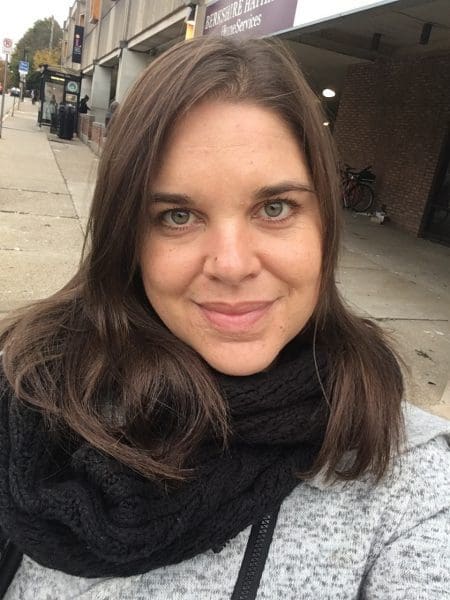
October 27, 2021
Transforming Services and Infrastructure at Robert W. Woodruff Library
By Brandon Locke
Editor’s note: This is a guest post in our Library Publishing Workflow Evolution series, featuring reflections from our Library Publishing Workflows partners on how journal publishing workflows at their libraries have evolved over time. You can see the full documentation on the Library Publishing Workflows page.
By Josh Hogan, writing about his experiences at Robert W. Woodruff Library at Atlanta University Center
Library publishing activities at the Atlanta University Center Robert W. Woodruff Library have undergone something of a transformation in the past six years, a transformation that has only picked up speed since joining the Library Publishing Workflows grant in 2019. AUC Woodruff Library currently hosts six active journals, four on Public Knowledge Project’s Open Journal Systems software (OJS) and two on our Islandora-based repository, RADAR. When I joined the team at AUC Woodruff in 2015, there were several journals being hosted in bepress’ Digital Commons platform, only two of which were actively producing any content. Those two journals still exist as the two using RADAR as their access platform.
Starting a Library Publishing Program
 During that period, our workflows were largely confined to uploading final PDF copies of journal issues and ensuring that any technical issues, which rarely occurred, were addressed. Our workflow could then be really represented as follows: 1) the journal editor emails a final copy of the issue to a member of the Digital Services Department, and 2) the Metadata and Digital Resources Librarian (my title at the time) uploads the final copy into Digital Commons and makes it available for download. All editorial functions and publishing workflows were confined to the individual practices of the journal’s editorial team.
During that period, our workflows were largely confined to uploading final PDF copies of journal issues and ensuring that any technical issues, which rarely occurred, were addressed. Our workflow could then be really represented as follows: 1) the journal editor emails a final copy of the issue to a member of the Digital Services Department, and 2) the Metadata and Digital Resources Librarian (my title at the time) uploads the final copy into Digital Commons and makes it available for download. All editorial functions and publishing workflows were confined to the individual practices of the journal’s editorial team.
In 2016, we added the optional service of assigning DOIs for journal articles published in the system, which added an optional workflow step of registering the DOI and adding it to the journal article’s metadata. This was not widely adopted by the editors and remained more theoretical than a concrete step. We also on-boarded a new (but currently defunct) student journal in 2016-17, which added the wrinkle of splitting an issue PDF into articles and helping create metadata for individual articles. We offered that service to the other existing journals and reorganized some of the content in Digital Commons to make articles more discoverable.
Migration to a New Institutional Repository
All of this added up to a rather ad hoc approach, tailored to the requests of the editors who avoided using any of the backend submission tools available in Digital Commons, preferring to stay with their email-based workflows. Then, in 2017, we decided to start moving toward a new system for our institutional repository and digital collections. Digital Commons had been an excellent choice for IR needs, but it was not well suited for digitized and born digital archival collections. As most of you have probably experienced, we yearned for one system that could do everything well. Unfortunately, we were not able to find that unicorn.
In the end, we adopted Islandora for our institutional repository and digital collections, but we found that it was unsuitable for journal publishing beyond sticking up PDF files. Therefore, we adopted OJS as our replacement for that functionality. We did so, however, with the understanding that any journals wishing to use the platform would agree to use the backend editorial workflows and not just display finished pdfs. Any journals who wished to use their own workflows would still use our existing ad hoc system, i.e., send us the finished copy for upload to RADAR. OJS users signed an agreement to use the whole system and to publish at least one issue a year.
Adapting Workflows & Services to New Infrastructure
These changes necessitated having a workflow in place to onboard and track the status of each journal and which platform they preferred. We also had to adopt a journal hosting agreement, spelling out what was expected of journals using the OJS platform as well as what they could expect from us. We also provided at least one overview training session and assisted editors with getting their teams registered for PKP School, PKP’s online training courses.
Our support at the beginning of the process includes assistance with selecting a theme, adding banners and logos, and other initial setup tasks. Once the journal is ready to accept submissions, they take over the workflow for the remainder of the process, with us providing technical support or additional training when needed. After publication, if the journal has opted for adding DOIs, we will provide registration of each article and update the metadata to reflect the DOI.
Ultimately, our transition from Digital Commons to RADAR/OJS has enabled us to provide more services, but has necessitated two main workflows as represented in our workflow diagram published as part of the Library Publishing Workflows. And of course, we are still struggling with exceptions to our usual practices. For example, one journal, published in RADAR, has the additional step of maintaining an embargo for on-campus readers and subscribers only. We have also developed and are working to refine workflows in OJS for publishing electronic theses and dissertations, a use that diverges somewhat from the purpose of OJS. Being a partner in this project, however, has helped us to be more deliberate in constructing our library publishing support and has provided us with the opportunity to learn best practices from more experienced institutions. The lessons learned will stand us in good stead as we grow our program.




